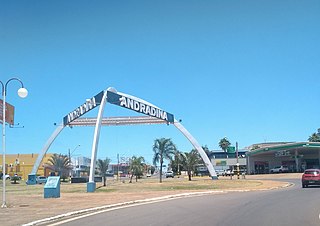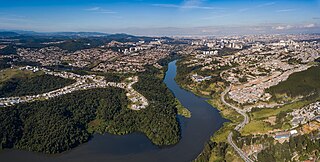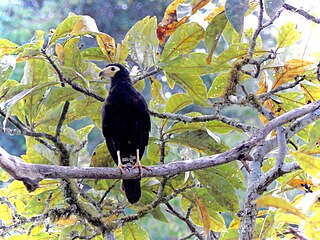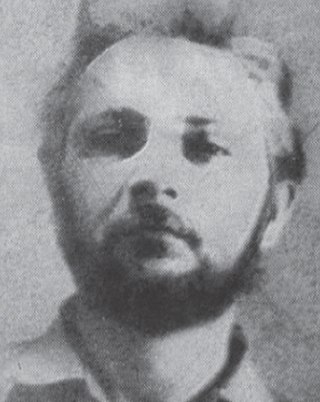
Marabá is a municipality in the state of Pará, Brazil. Its greatest geographic reference is the confluence of two large rivers near the historic city center, the Itacaiunas River and the Tocantins River, forming a "Y" if seen from space. It basically consists of six urban centers linked by five highways.

Mogi Guaçu is a municipality in the state of São Paulo in Brazil. The population is 153,033 in an area of 813 km2 (314 sq mi). The city is at an average elevation of 591 m (1,939 ft) above sea level. Mogi Guaçu is a place name that probably originates from the Tupi language. It means "large river of snakes". The city was founded on April 9, 1877.
Paraíso means paradise in English. It also may refer to:

Pindorama is a municipality in the state of São Paulo, Brazil. The name is Tupi for Land of the Palms, the natives name for Brazil. According to tradition, before colonisation "Pindorama" was the native name of Brazil, given by the local indigenous peoples.
São Miguel is the name of the largest island of the Azores and may also refer to:

Andradina is a municipality of the state of São Paulo, Brazil.

Santana de Parnaíba is a city and municipality in the state of São Paulo in Brazil. It is part of the Metropolitan Region of São Paulo. The population is 142,301 in an area of 179.95 km2 (69.48 sq mi). It was founded in 1625 near the Tietê River by Susana Dias, an important Bandeirante wife. It was the birthplace of prominent Bandeirante Domingos Jorge Velho.

Arraial do Cabo is a municipality located in the Brazilian state of Rio de Janeiro. Its population was 30,593 as of 2020 census and its total area is 160 square kilometres (62 sq mi).

Walter Hugo Khouri was a Brazilian film director, screenwriter, and producer of Lebanese and Italian descent.

Tapirapé Biological Reserve is a biological reserve in the state of Pará, Brazil.
There are several rivers named Vermelho River in Brazil:
Pindorama Biological Reserve is a biological reserve in the state of São Paulo, Brazil.
Vila Fachini Biological Reserve is a biological reserve in the city of São Paulo, Brazil.
Andradina Biological Reserve is a biological reserve administered by São Paulo state, Brazil.

The Microregion of Catanduva is located on the north of São Paulo state, Brazil, and is made up of 13 municipalities. It belongs to the Mesoregion of São José do Rio Preto.

Boanerges de Souza Massa was a Brazilian physician who joined the resistance against the military dictatorship. He was the field surgeon of the National Liberation Action founded by Carlos Marighella. After the police liquidated Marighella, he went to Cuba to take guerilla courses and co-founded the People's Liberation Movement. The army captured him in 1971 in Pindorama and he disappeared shortly thereafter. 25 years later, the Brazilian government officially acknowledged its responsibility.
This page is based on this
Wikipedia article Text is available under the
CC BY-SA 4.0 license; additional terms may apply.
Images, videos and audio are available under their respective licenses.









